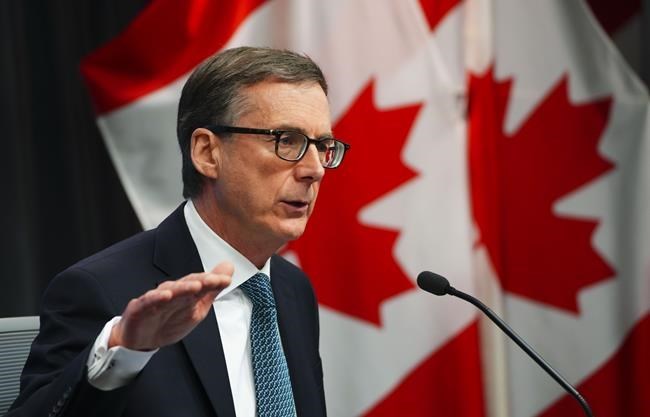OTTAWA — The Bank of Canada is moving ahead with another hike to its key policy rate in the face of decades-high inflation rates and record-low unemployment rates.
Here's what to know about the connection between the interest rates, inflation and the job market.
What is the key policy rate and what does it do?
The key policy rate, also known as the target for the overnight rate, is how much interest the Bank of Canada wants commercial banks to charge when lending each other money overnight to settle daily balances. Knowing how much it costs to lend money, or deposit it with the central bank, helps set the interest rates charged on things like loans and mortgages.
Lowering the key rate makes it cheaper to borrow and spend, usually during economic downturns when inflation rates are too low, with the goal of creating growth. Raising rates has the opposite effect by cooling spending when inflation rises above the Bank of Canada’s comfort zone of between one and three per cent.
Why are inflation rates so high right now?
One big reason is demand for goods like household items is outpacing the capacity of manufacturers and supply chains. That has driven up the cost for the limited supply of goods, but also shipping costs that show up in price increases.
But as Manulife global chief economist Frances Donald noted Tuesday on Twitter, "we are moving from COVID inflation to conflict inflation." Russia's unprovoked invasion of Ukraine has sent up costs for oil and food, which is driving price increases at the pumps and grocery stores. It's easy to avoid spending on cars, home renovations and fitness equipment, Donald wrote, but not so for food and energy.
"Conflict inflation is going to be lower in headline going forward, but more painful for growth," she wrote.
How does the labour market fit into the inflation picture?
The concern from economists, and the central bank by extension, is that people begin to expect inflation to stay higher for longer. Businesses would start working in faster price increases to keep ahead of expectations for rising costs. Workers would ask for wage increases to keep up with the cost-of-living. A spiral could ensue where wages become a key driver of price increases.
Average hourly wages, as tracked by Statistics Canada, have been rising in recent months, though still lag the headline inflation rate. But wages could rise faster as businesses try to fill more than 900,000 job vacancies as of January, the most recent figures available from Statistics Canada. Adding to stress is the dwindling pool of available workers: the unemployment rate hit a historical low of 5.3 per cent last month.
Why would the Bank of Canada monitor unemployment?
The Bank of Canada's inflation-targeting mandate, which the federal government renewed in December, included wording about tracking the labour market. The central bank can decide to allow inflation to sit closer to either end of the its target range of one to three per cent for short bursts as it determines when the labour market hits its full potential.
Other central banks, such as the U.S. Federal Reserve, more explicitly target maximum employment as part of their mandate.
The Bank of Canada has signalled concerns about the current labour market tightness, which would lead to a tap on the economic brakes. But if the central bank taps to hard, mortgage rates, for example, could rise faster than some households can afford.
"And if enough of them were to slow their spending materially, it could affect the whole economy, such as by slowing growth or increasing unemployment," deputy governor Sharon Kozicki said in a speech last month.
This report by The 91Ô´´ Press was first published April 13, 2022.
The 91Ô´´ Press



